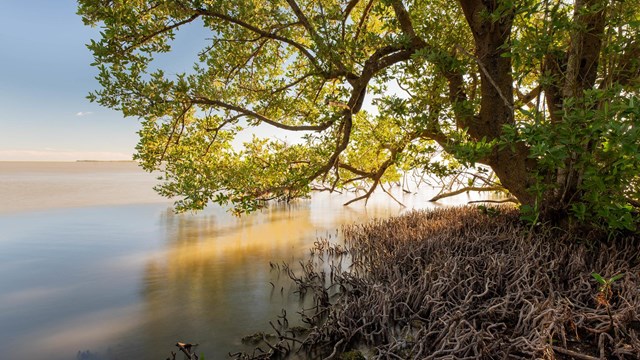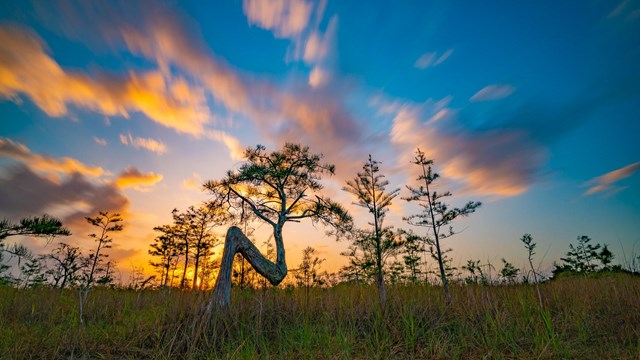It is important to know that the Everglades has two very distinct seasons: dry season and wet season.Although it varies from year to year, dry season is typically December through April and wet season lasts from May to November. Dry season is also the busy season because of the warm winters that attract the largest variety of wading birds and their predators. Wet season is rainy and can produce a lot of mosquitoes. Because of the reduced visitation during the rainy summer season, many ranger-led programs are not available, but other guided tour options remain available. Please check the calendar for the current schedule of ranger programs or contact the individual guided tour operators. The Everglades spans across 1.5 million acres that stretches over the southern part of Florida, but it easy to access the park’s three main areas. The northern section of the park is accessible via Miami or Everglades City, the southern section is accessible through Homestead. Visiting the Everglades allows you to explore a vast diversity of flora and fauna in different eco-systems: freshwater sloughs, marl prairies, tropical hammocks, pinelands, cypress, mangrove, coastal lowlands, marine, and estuarine. There is a lot of area to discover at the Everglades, so it is vital to be prepared. Basic Information Links If you have lost an item inside Everglades National Park, please fill out the form below. Please be as complete and accurate as possible. This will help us match your report with the park's found items. If we do not have a matching item, you will not be contacted further. Please direct any follow-up questions to park headquarters during business hours at (305) 242-7740.
To report a lost item please click here. Find interactive maps, tours of park places, on-the-ground accessibility information, and much more to plan your Everglades National Park adventure!
The free app is currently available for iOS and Android devices. Find interactive maps, tours of park places, on-the-ground accessibility information, and much more to plan your Everglades National Park adventure!
The free app is currently available for iOS and Android devices. Everglades National Park has a total acreage of 1,509,000 acres in Miami Dade County, Monroe County and Collier County. Unlike most National Parks, the Everglades has three entrances in three different cities.
Directions Details All entrance fees & passes can be paid for at the Homestead or Shark Valley entrances or online through Recreation.gov. The Flamingo Visitor Center offers educational displays, informational brochures, and wilderness permits. Campground facilities, a public boat ramp, a marina store, and other hiking and canoeing trails are located near the visitor center. Plan ahead for food and other needs, there are minimal services available. Visitors traveling to Flamingo through the main entrance or by boat, need to bring adequate food and water unless planning to eat at the Buttonwood Cafe or pick up basic supplies at the marina. The Ernest Coe Visitor Center is open 365 days a year. It offers educational displays, orientation films, and informational brochures. Special collections by local artists are often displayed. Books, film, postcards, and insect repellent may be purchased in the adjoining bookstore. A series of popular walking trails begin only a short drive from the visitor center. Restrooms are available. Shark Valley Visitor Center offers educational displays, a park video and informational brochures. Books, postcards, and other souvenirs are available in the gift store. Guided tram tours, bicycle rentals, snacks and soft drinks are available from Shark Valley Tram Tours, Inc. Two short walking trails (one accessible), are located off the main trail for your enjoyment. Restrooms are available. The Gulf Coast Visitor Center is currently closed due to construction. Fridays – Mondays from 9:00am – 12:00pm rangers are temporarily located in the Everglades Adventures Visitor Center at 611 Collier Ave, Everglades City, FL 34139. For more information on the construction, please read "Everglades National Park closes Gulf Coast canoe/kayak launch and visitor contact station for construction." 
Visiting in the Wet Season
Planning a trip to the park May - November? Make the most of your visit during the wet season! 
Visiting in the Dry Season
Planning a trip to the park Dec - April? The dry season is the most popular time to visit! |
Last updated: April 18, 2025
